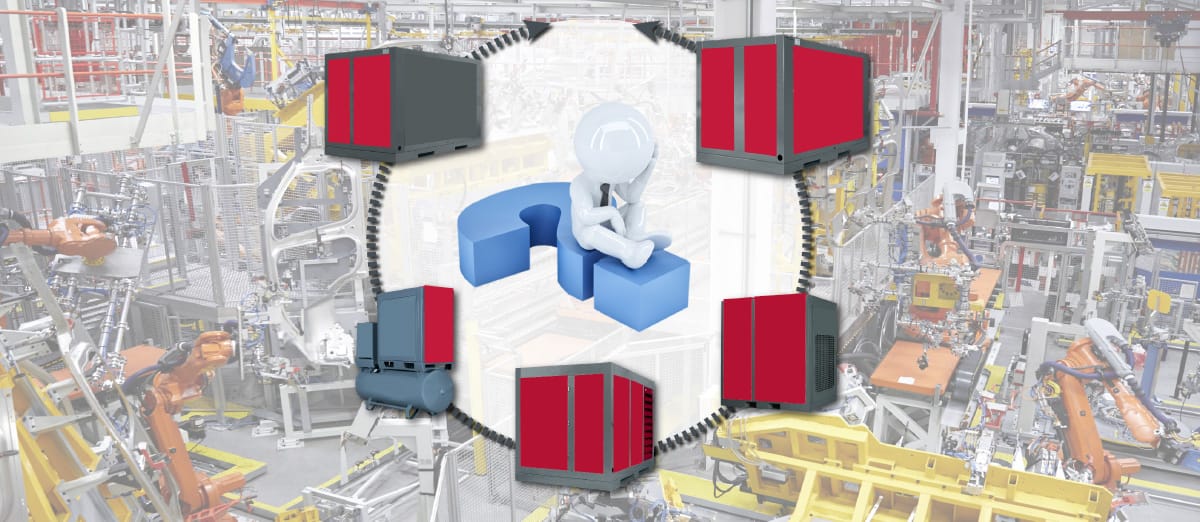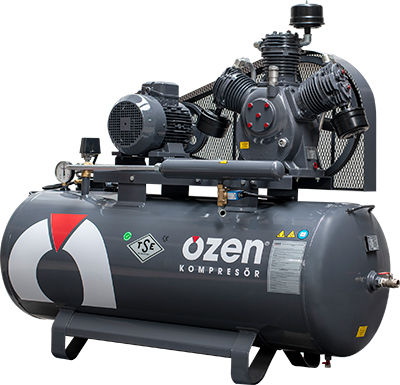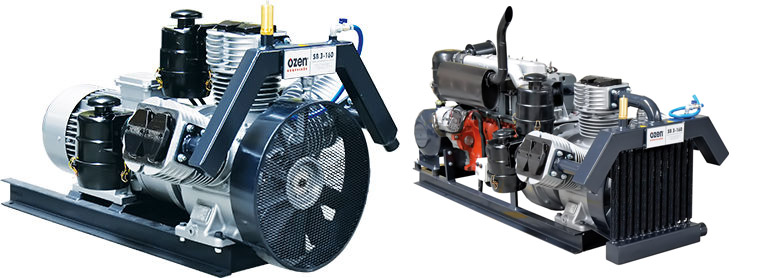How to Choose the Right Air Compressor?
Air compressors are versatile machines that perform various tasks when connected to pneumatic tools. Compared to electric power tools, they have fewer moving parts, which allows them to generate more torque and power, and also ensures a longer service life.

Key Factors to Consider When Selecting an Air Compressor
Compressors take in ambient air and deliver it at higher pressure levels for use. While compressed air offers many advantages, it also comes with significant operating costs. This is because compressed air requires considerable power, which increases electricity expenses. To use compressed air efficiently and cost-effectively, selecting the right compressor is essential.
Compressors are at the heart of many applications—from small workshops to large industrial facilities. Choosing the best compressor for your business or application can be confusing if you are not familiar with the key criteria. There are piston, screw, variable-speed (inverter), and portable compressors, each suited for different needs. To select the most suitable one, several important points should be considered.
To achieve high efficiency, durability, and air quality with a low carbon footprint, there are certain concepts you should be familiar with. In this article, we outline the main criteria for choosing the right air compressor for your operation.
When selecting a compressor, consider:
-
Volumetric flow rate (air delivery)
-
Operating pressure
-
Compressor room size
-
Power consumption
-
Required air quality
Choosing a compressor with higher values than your actual needs is essentially wasting money. If you underestimate your air demand—or fail to consider at least two years of future growth—you may end up purchasing a second compressor or investing in an oversized unit with very high initial costs. A well-selected, properly sized compressor delivers maximum air output with minimum energy consumption under your operating conditions.
For businesses with a continuous air demand of up to 1 m³/min and up to 12 bar, piston compressors are generally suitable. For applications requiring more than 1 m³/min, up to 16 bar, and continuous operation, screw compressors are more economical.
Where screw compressors are insufficient—such as applications requiring 60 m³/min and above—turbo compressors become advantageous. For very high pressures, multi-stage piston compressors are preferred, while dynamic compressors are used for extremely high air volumes.
The power required by a compressor to compress 1 m³/min of air to the desired pressure is known as its specific power consumption. Choosing a compressor with the lowest specific energy consumption (kW/m³) significantly reduces electricity usage and overall operating costs. Similarly, the compressor should consume as little power as possible during idle (unloaded) operation.
For some compressed air applications, oil-free air is mandatory. In such cases, oil-free piston or oil-free screw compressors must be used.
What Is a Frequency Inverter (VSD / VFD)?
Another key concept in compressor selection is the frequency inverter, also known as a variable-speed drive (VSD) or frequency converter. As the name suggests, it is a device that converts the fixed-frequency AC power from the grid into a variable-frequency output to control motor speed.
Frequency inverters can power various equipment, including three-phase motors, pumps, and HVAC systems. By adjusting the output frequency, the speed and torque of a three-phase AC motor can be controlled without limiting its performance—only improving its efficiency. These types of motors are commonly used in industrial environments.
How Does a Piston Compressor Work?
 The piston compressor is one of the oldest and most widely used industrial compressor types. It increases the pressure of a contained air or gas volume using the principle of displacement. Piston compressors are available in various configurations, including single-stage, two-stage, oil-lubricated, and oil-free versions.
The piston compressor is one of the oldest and most widely used industrial compressor types. It increases the pressure of a contained air or gas volume using the principle of displacement. Piston compressors are available in various configurations, including single-stage, two-stage, oil-lubricated, and oil-free versions.
Most piston compressors include self-acting valves that open and close based on the pressure differences on both sides of the valve disc. Some larger machines are equipped with crossheads, seals, and a ventilated intermediate section to prevent oil from entering the compression chamber.
In a piston compressor with a valve system and two stainless-steel valve discs, the piston moves downward and draws air into the cylinder. The larger disc flexes downward, allowing air to pass. As the piston moves upward, the disc seals against the valve seat, and the compressed air is forced through the outlet and delivered to the downstream process.
What Makes a Screw Compressor Different?
Pistonlu kompresörlerden farklı olarak vidalı kompresörlerde dengesizliğe neden olabilecek valf veya diğer mekanik kuvvetler yoktur. Bu, vidalı kompresörün yüksek hızlarda çalışmasına izin verirken, büyük bir akış hızını küçük dış boyutlarla birleştirir. Sabit hızlı veya değişken hızlı sürücü işlemi seçenekleriyle yağsız ve yağ enjeksiyonlu olmak üzere iki ana versiyonu vardır. Vidalı kompresörlerin asıl faydası enerji verimliliğidir.

Where Are Portable Compressors Used?
Portable compressors are used in a wide range of applications, from construction and road maintenance to rescue operations. Diesel-driven oil-injected screw compressors, diesel-powered silo compressors, and mobile piston compressors are commonly used on job sites for off-road drilling, road repair, pipeline work, rock reinforcement, sandblasting, rescue operations, and similar applications. Very small and very large portable compressors are also sometimes offered with electric motors.


